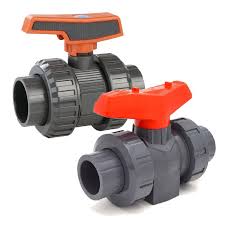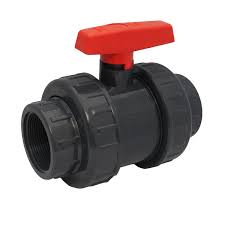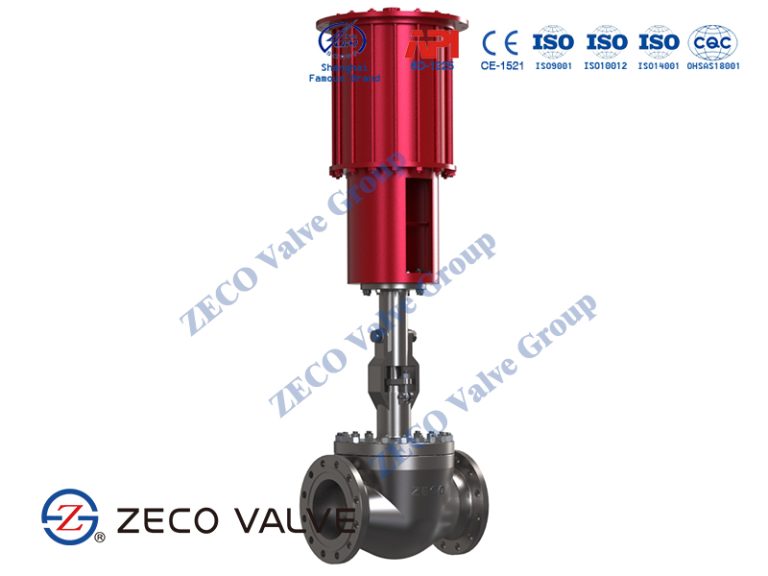PVC Ball Valve

The Application of PVC Ball Valve
The Application of PVC Ball Valves: PVC ball valves are a popular choice for a wide range of applications due to their affordability and versatility. PVC ball valve price can vary depending on size and specifications, but they are generally a cost-effective solution. 6 inch pvc ball valve models are commonly used in larger piping systems, while the ball valve handle pvc design provides easy manual operation. Cameron, a renowned valve manufacturer, offers a comprehensive range of PVC ball valves suitable for industries such as water treatment, chemical processing, and agriculture, where corrosion resistance and reliable performance are crucial. Whether you’re looking for a simple on/off control or precise flow regulation, PVC ball valves provide a durable and practical solution for your application needs.
What Are The Types Of PVC Ball Valve?
- Full Port PVC Ball Valve: These valves have a bore size that is the same as the pipe size, allowing for unrestricted flow and minimal pressure drop.
- Standard Port PVC Ball Valve: These have a slightly smaller bore size compared to the pipe size, resulting in a more compact valve design.
- Reduced Port PVC Ball Valve: These have a significantly smaller bore size than the pipe size, which can be useful for throttling or regulating flow.
- Flanged PVC Ball Valve: This type features flanged connections for easy installation and removal from the piping system.
- Threaded PVC Ball Valve: These have threaded ends that allow for direct connection to threaded pipe fittings.
- Socket Weld PVC Ball Valve: These valves have socket ends designed for solvent welding directly to PVC pipes.
- Electrically Actuated PVC Ball Valve: These incorporate an electric actuator to provide automated, remote-controlled operation of the valve.
- Pneumatic Actuated PVC Ball Valve: These use compressed air to operate the valve, enabling automated control.
What Is PVC Ball Valve?
A PVC ball valve is a type of quarter-turn valve that uses a hollow, perforated, and rotatable ball to control the flow of fluids or gases. The ball acts as the valve’s closure mechanism, rotating 90 degrees to open or close the valve. PVC, or polyvinyl chloride, is a common material used for the valve body and other components due to its excellent chemical resistance, corrosion resistance, and cost-effectiveness. PVC ball valves are widely used in various industries, including water treatment, chemical processing, HVAC systems, and agriculture, where their durability, reliability, and ease of operation make them a preferred choice for flow control applications.
How to Select the Right PVC Ball Valve?
When selecting the right PVC ball valve for an application, there are several key factors to consider:
Size: Choose a valve size that matches the diameter of the piping system to ensure proper fit and flow capacity. Pressure Rating: Ensure the valve’s pressure rating is suitable for the system’s operating pressure to prevent leaks or failures. Temperature Range: Verify the valve’s temperature rating aligns with the expected range of the fluid or gas being handled. Chemical Compatibility: Confirm the PVC material is compatible with the media flowing through the system to avoid corrosion or degradation. Actuation: Decide whether a manual, electric, or pneumatic actuation is required based on the application’s automation needs.
By carefully evaluating these criteria, you can select the most appropriate PVC ball valve to meet the specific requirements of your system and ensure reliable, long-lasting performance.
Features of PVC Ball Valve
Corrosion Resistance: PVC is highly resistant to a wide range of chemicals, making PVC ball valves suitable for use in corrosive environments.
Lightweight Design: The lightweight nature of PVC material makes PVC ball valves easy to handle and install, reducing the overall installation cost.
Temperature Tolerance: PVC ball valves can typically operate within a temperature range of 0°C to 60°C, making them suitable for a variety of applications.
Bubble-Tight Sealing: PVC ball valves provide excellent bubble-tight sealing, ensuring minimal leakage and reliable flow control.
Easy Maintenance: PVC ball valves require minimal maintenance and can be easily disassembled and reassembled for servicing or replacement of components.
Cost-Effectiveness: Compared to other valve materials, PVC ball valves offer a cost-effective solution for flow control applications.
Versatility: PVC ball valves can be used in various industries, including water treatment, chemical processing, and HVAC systems, due to their versatile design.
Advantages and Disadvantages of PVC Ball Valve
Advantages of PVC Ball Valves:
- Corrosion Resistance: PVC material exhibits excellent resistance to a wide range of chemicals, making PVC ball valves suitable for use in corrosive environments.
- Cost-Effectiveness: PVC ball valves are generally more affordable compared to valves made of other materials, such as metal.
- Lightweight: The lightweight nature of PVC material makes PVC ball valves easy to handle and install, reducing the overall installation cost.
- Ease of Maintenance: PVC ball valves can be easily disassembled and reassembled for servicing or replacement of components, simplifying maintenance.
- Bubble-Tight Sealing: PVC ball valves provide excellent bubble-tight sealing, ensuring minimal leakage and reliable flow control.
Disadvantages of PVC Ball Valves:
- Temperature Limitations: PVC ball valves typically have a temperature range of 0°C to 60°C, limiting their use in applications with higher or lower temperatures.
- Reduced Durability: Compared to metal valves, PVC ball valves may have a shorter lifespan and reduced durability in high-stress or high-pressure applications.
- Limited Pressure Rating: PVC ball valves generally have a lower pressure rating compared to metal valves, restricting their use in high-pressure systems.
- Potential for Embrittlement: Prolonged exposure to ultraviolet (UV) light or certain chemicals can cause PVC material to become brittle, compromising the valve’s performance over time.
- Restricted Flow Capacity: Depending on the valve’s design, the flow capacity of PVC ball valves may be slightly lower than that of metal ball valves of the same size.

The Specifications of PVC Ball Valve
| Specification | Details |
|---|---|
| Type | Full Port |
| Ball Material | PVC |
| Attachment Type | Socket Weld |
| Thread Standard | N/A |
| Thread Size | N/A |
| Body Material | PVC |
| Safe for Use With | Water, Acids, Bases, Solvents |
| Handle Type | Lever |
| Handle Material | PVC |
| Maximum Working Pressure (psi) | 150 |
| Maximum Working Pressure (bar) | 10 |
| Operating Pressure | 0-150 psi (0-10 bar) |
The Installation Steps for PVC Ball Valve
- Pipe Preparation: Ensure the pipe ends are clean, free of burrs, and properly sized to match the valve’s connection type (e.g., socket weld, threaded).
- Valve Orientation: Determine the desired orientation of the valve (e.g., horizontal, vertical) based on the flow direction and accessibility requirements.
- Support and Alignment: Provide adequate support for the valve and properly align it with the pipe to prevent stress on the connections.
- Socket Weld Connection: For socket weld valves, ensure the pipe and valve socket are thoroughly cleaned, apply primer, and then solvent weld the connection according to the manufacturer’s instructions.
- Threaded Connection: For threaded valves, wrap the threads with PTFE tape or apply a thread sealant, then hand-tighten the valve into the pipe fitting and finish with a wrench.
- Valve Operation: Operate the valve handle through its full range of motion to ensure smooth operation and that the valve is fully open or closed.
- Leak Testing: Pressurize the system and check for any leaks around the valve connections. Tighten the connections as necessary to eliminate any leaks.
- Documentation: Record the valve’s installation location, date, and any other relevant information for future reference and maintenance purposes.
- Commissioning: Once the installation is complete, gradually introduce the system media and check for proper valve function and any potential issues.
The Operation Theory of PVC Ball Valve
Operation Theory of PVC Ball Valve:
- Valve Mechanism: PVC ball valves use a hollow, perforated ball as the closure mechanism. The ball rotates 90 degrees to open or close the valve, allowing or restricting the flow of media through the valve.
- Sealing: PVC ball valves employ a soft seal, typically made of PTFE (Teflon) or other compatible materials, which creates a bubble-tight seal when the valve is in the closed position.
- Handle Operation: The valve is operated by a lever or handle attached to the ball. Rotating the handle 90 degrees turns the ball, transitioning the valve between the open and closed positions.
- Flow Control: By adjusting the handle position, the degree of ball rotation can be controlled, allowing for variable flow regulation through the valve.
Disassembly of PVC Ball Valve:
- Isolate the Valve: Ensure the valve is isolated from the system and the line is depressurized before attempting any disassembly.
- Remove the Handle: Unscrew or unclip the handle from the valve stem, allowing access to the internal components.
- Disassemble the Body: Depending on the valve design, the body may need to be unscrewed or unclipped to access the internal components.
- Extract the Ball: Carefully remove the ball from the valve body, taking note of its orientation for proper reinstallation.
- Inspect the Seals: Examine the seals, such as the stem seal and the ball seal, for any wear or damage. These may need to be replaced during reassembly.
- Clean and Inspect: Thoroughly clean all valve components and inspect them for any signs of wear or damage. Replace any worn or damaged parts as necessary.
- Reassembly: Carefully reassemble the valve in reverse order, ensuring all components are properly aligned and tightened to the manufacturer’s specifications.
- Functional Testing: After reassembly, test the valve’s operation by cycling it through the full range of motion and checking for any leaks or issues.
